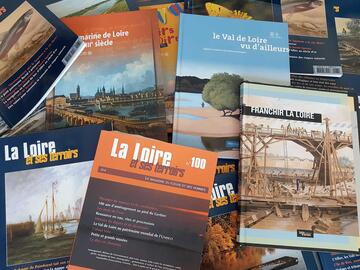
06/03/2025
[Fr] Décès de Philippe Auclerc
C'est avec tristesse que nous avons appris aujourd'hui le décès de Philippe Auclerc, co-fondateur de la maison d'édition "Loire et terroirs" et rédacteur...
Published on 20 December 2017 - Updated 23 May 2019
Cet article date d'il y a plus de 7 ans
The cultural season "Gardens in the Loire Valley 2017", initiated and overseen by Mission Val de Loire, ended in November with a closing symposium held in Tours and Fontevraud. After an overall assessment among the various partners, the season looks to have been a success, having helped to enhance the Loire Valley with a more diverse "Garden" image, extending beyond the usual vision.
The cultural season "Gardens in the Loire Valley 2017" was launched on 14 March (in Villandry and Angers). It ended with a closing symposium on 24 & 25 November (in Tours and Fontevraud), followed by a general assessment feedback meeting on 12 December.
More than 70 partners and stakeholders, working across the two regions within an "extended" perimeter of the Loire Valley, got involved. The season was organised and run on a partnership basis between regional garden associations, regional and Département-level tourism promotion organisations and other academic and scientific partners.
Mission Val de Loire assumed the role of initiator, facilitator, coordinator and overall manager. An overall assessment was carried out and the following points can be highlighted.
In terms of planning and anticipating, this season got underway in sufficient conditions for ensuring it continued smoothly. Indeed, the aim is always to tie the cultural, historical and heritage-related opportunities associated with the Unesco site listing in with all of the stakeholders’ timetable, administrative and budgetary constraints. It was possible to carry out the cultural engineering work, combining documentary research and involvement of the stakeholders, before the season began, and this is essential. That said, it was not always possible for certain annual features of the budgetary and administrative programme to fit into the N-1 timeframe, which proved incompressible for almost all those involved.
The communication tools set up worked fine, but with a few glitches. The marking tools, and graphic design, were not systematically adopted by the stakeholders. In light of this finding, the idea of drawing up some form of contract in the future is being floated. The digital contents and tools ( dedicated website , Instagram account , videos , etc.) made available to the public were received with mixed results: high-quality, if relatively limited views and visits. Consideration must therefore be given to setting up a fully-fledged digital strategy in the future.
Content offerings met with varying success. The 3 "mini-exhibitions" put on by Mission Val de Loire (one of which was held on two occasions) did well, as did the exhibition organised by the Regional Inventory Department. The turnout to the cycle of conferences was low, however.
The operators of sites that participated in this season have a positive impression overall. Visitor numbers seem to have been good. Above all, what comes across is the sense of having worked together on a joint project. The implicit willingness to showcase the Loire Valley as a cultural tourism destination and territory is shared by the vast majority of stakeholders.
It is no doubt in terms of the media coverage/press relations that the results are most promising. This is a demonstrated fact. The initiative was widely covered by the media, with regular features, right from the start of the season and throughout its duration. Such results can be put down to effective coordination (development of content, contacts, logistics, monitoring) grouping together within an operational unit Mission Val de Loire, the Centre-Loire Valley Regional Tourist Board and Pays de la Loire Regional Agency, in partnership with Département-level entities and in liaison with a press relations agency specially designated for this purpose. This principle had already been set up for the "Anne of Brittany" (2013) and "Francis I" (2015) seasons and its relevance this time round proved no exception.
This season can therefore be considered a success. The Loire Valley has been enhanced with a more diverse "Garden" image, extending beyond the usual vision. There are plans to produce a new record of it with a publication following on from the symposium.
Vidéos du colloque "Jardins et Végétal : Patrimoines du Val de Loire"
The 3rd Meeting of European World Heritage Associations was held on 5 & 6 October 2017 in the Hanseatic City of Lübeck, in Germany.
The debates focused on cross-border management and protection, sustainable tourism and communication and interpretation around World Heritage Properties as European places for meeting and learning.
This was an opportunity for Mission Val de Loire to present the cultural season Gardens in the Loire Valley during a session on sustainable tourism.
To find out more: http://www.whmeeting-luebeck2017.de/fr